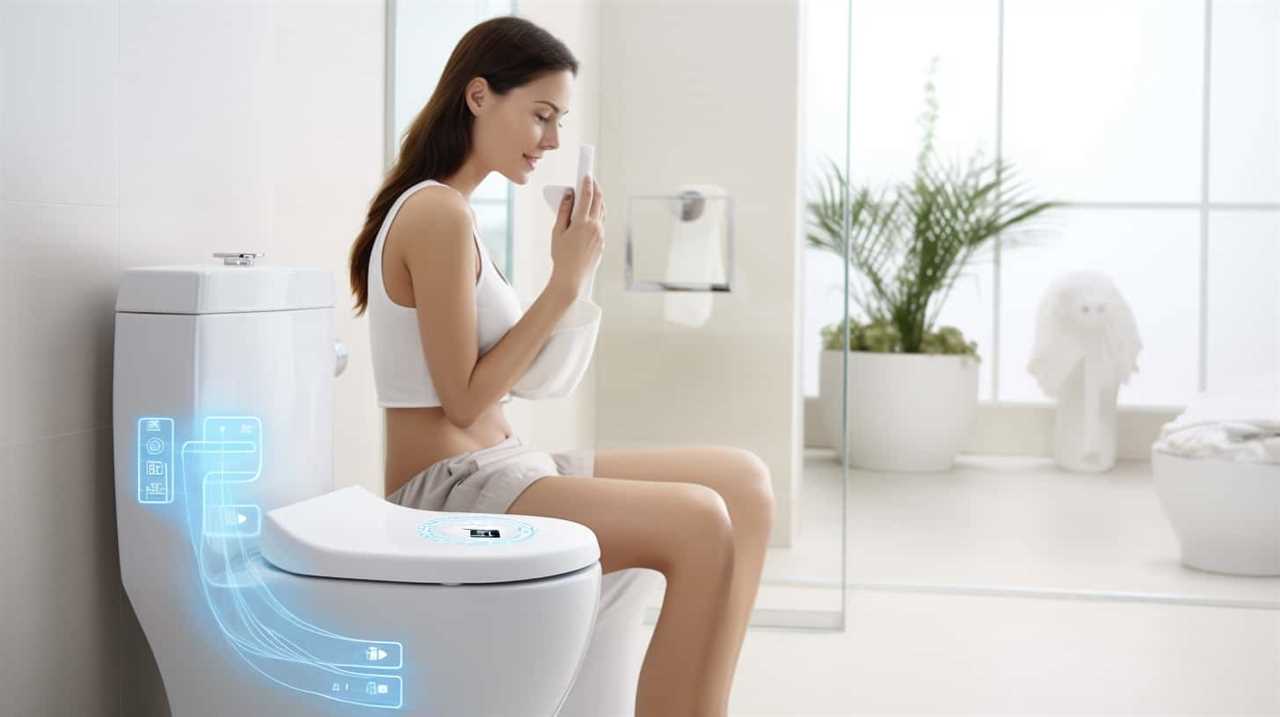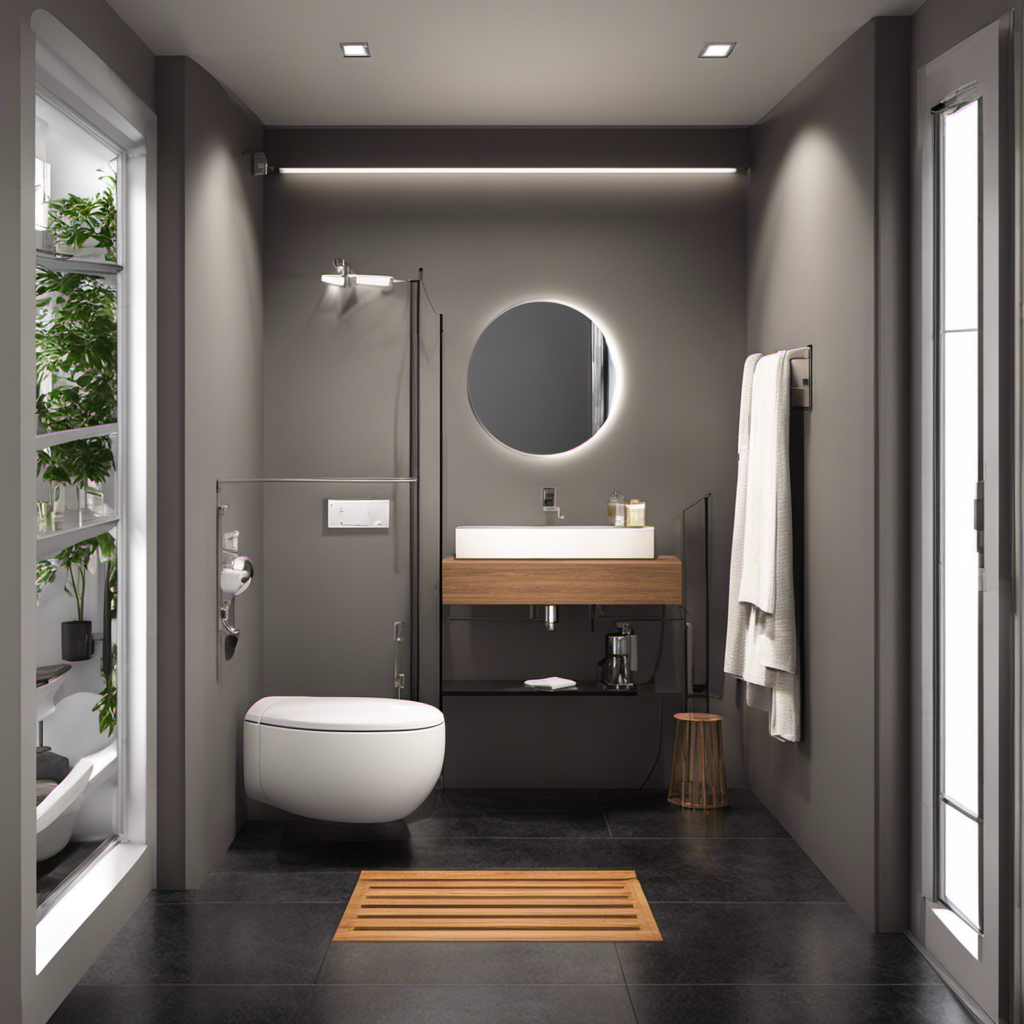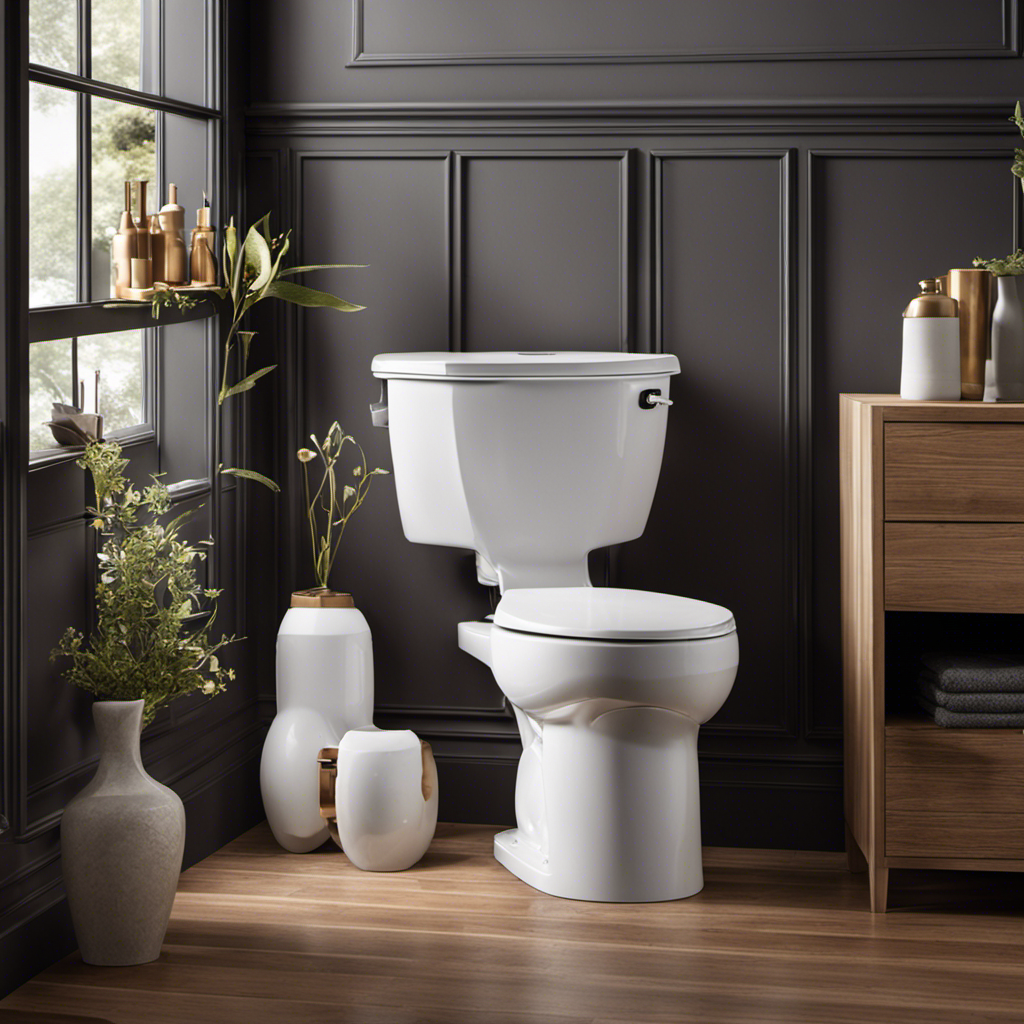- Troubleshooting low water level in the toilet tank
- Adjusting the water level in the toilet tank
Are you tired of dealing with a stubborn toilet that refuses to flush? Well, fear not, because we’ve got the solution for you.
In this article, we will guide you through the step-by-step process of how to flush a toilet when it’s not working. From checking for visible blockages to using a plunger and even a toilet auger for those tough clogs, we’ve got you covered.
Get ready to become a master of toilet troubleshooting!
Key Takeaways
- Inspect the toilet bowl for any visible blockages.
- Use a plunger to dislodge any visible blockages.
- Use a toilet auger for stubborn clogs.
- Check the water level in the tank and adjust or replace the fill valve if necessary.
- Adjust or replace the flush mechanism if the handle is loose or broken, the chain is misaligned or damaged, or the flapper valve is faulty.
Check for Any Visible Blockages
First, we inspect the toilet bowl for any visible blockages. Common causes of toilet blockages include excessive toilet paper, foreign objects, or a buildup of waste. Signs of a malfunctioning toilet can include slow draining, gurgling sounds, or water backing up into the bowl.
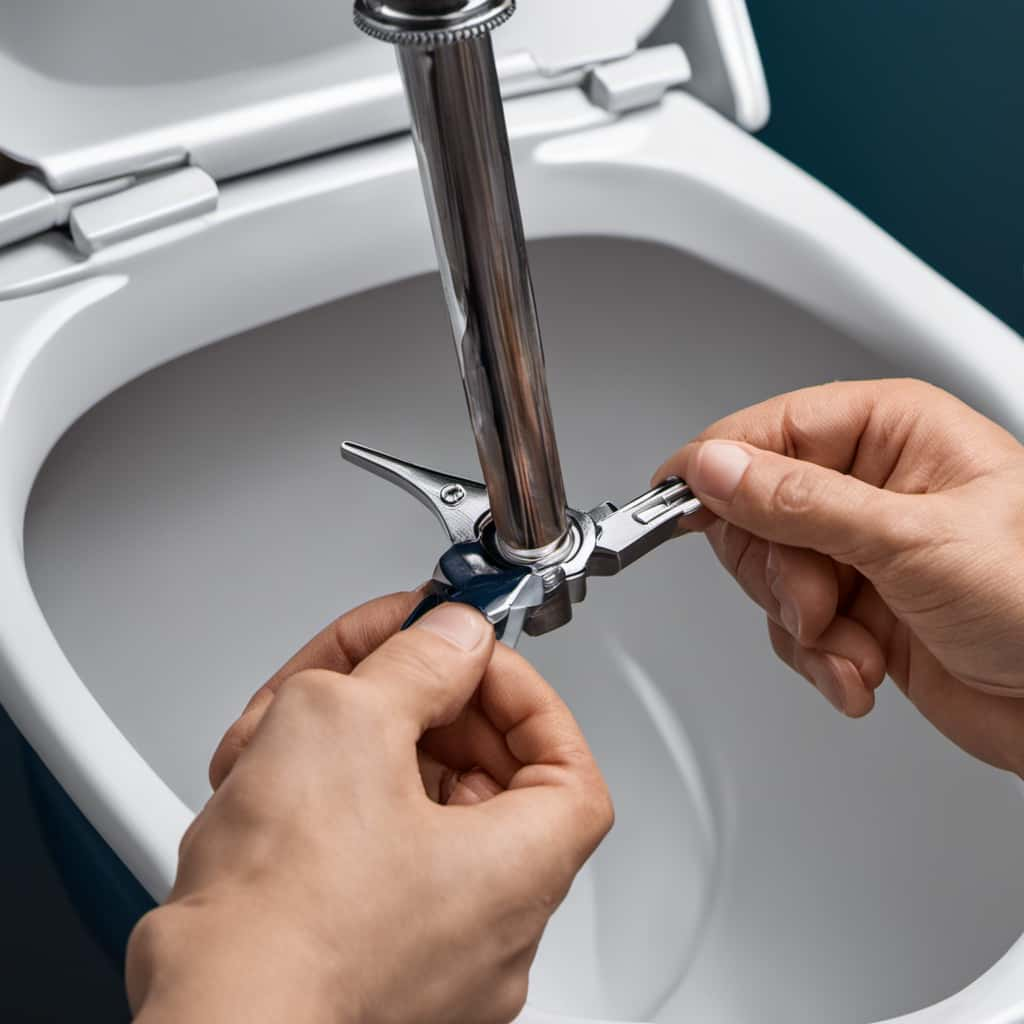
To check for blockages, put on gloves and grab a flashlight. Shine the light into the bowl and look for any obstructions, such as paper or objects that may have fallen in. If you see any blockages, try using a plunger to dislodge them.
However, if there are no visible blockages, move on to the next step of troubleshooting.
Try Using a Plunger
To continue troubleshooting a malfunctioning toilet, we can try using a plunger to resolve any blockages that may be causing the issue. Here are some steps to follow when using a plunger:
- Ensure the plunger is clean and has a good seal with the toilet bowl.
- Place the plunger over the drain hole and apply downward pressure.
- Begin plunging vigorously up and down to create suction.
- Continue plunging for about 20-30 seconds, being careful not to break the seal.
- Check if the water starts to drain or if the flush improves.
- If the blockage persists, try alternative methods such as using a toilet auger or applying a drain cleaner specifically designed for toilets.
Common mistakes to avoid when using a plunger include:
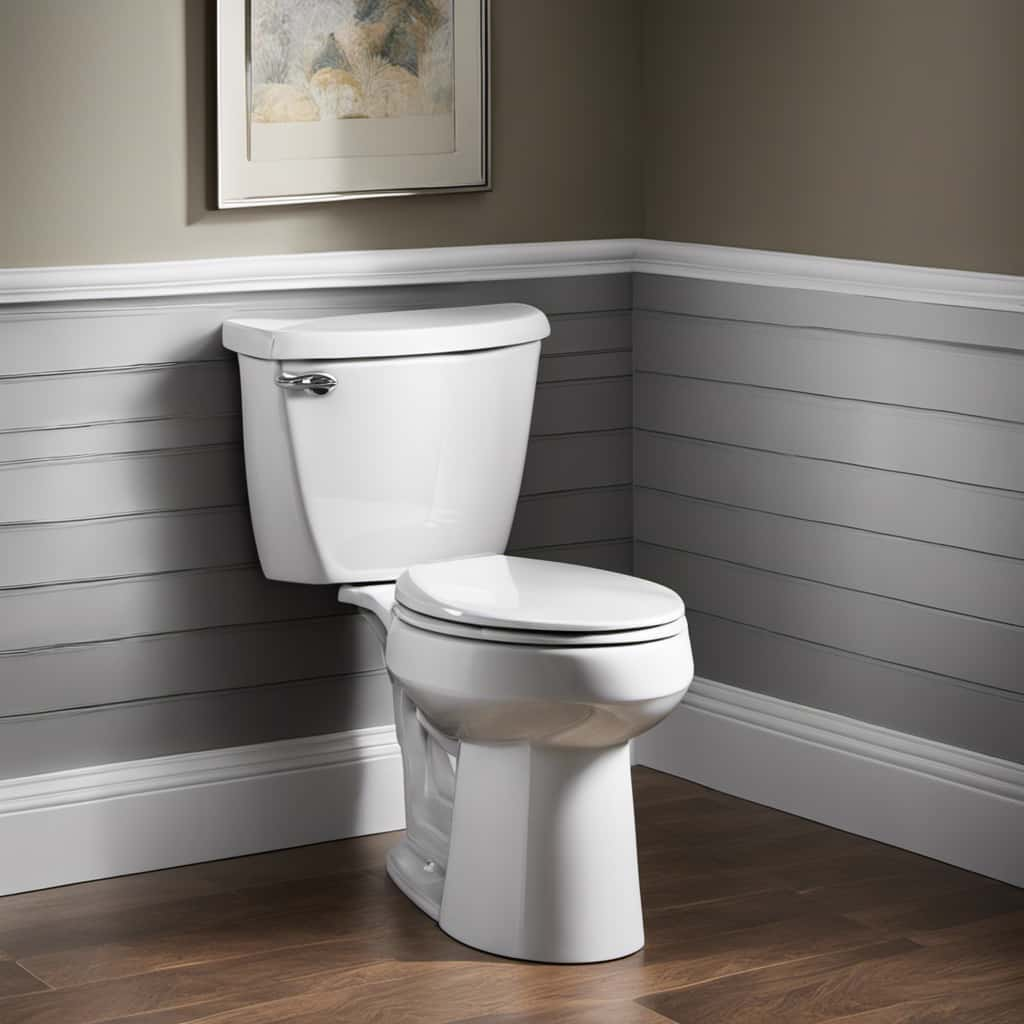
- Using too much force, which can lead to water splashing out of the bowl.
- Not creating a proper seal, which reduces the effectiveness of the plunging action.
- Giving up too soon; sometimes it takes several attempts to clear the blockage.
Use a Toilet Auger for Stubborn Clogs
Let’s tackle stubborn clogs by using a toilet auger.
When a plunger fails to clear the blockage, a toilet auger serves as an effective alternative in resolving the issue.
The auger is a long, flexible tool with a coiled wire or cable at the end. Its purpose is to break through and remove obstructions that cause clogs.
But before we go into the step-by-step process of using a toilet auger, let’s quickly discuss some common causes of stubborn clogs. These can include excessive toilet paper usage, foreign objects flushed down the toilet, or a buildup of solid waste over time. Understanding these causes can help us prevent future clogs.

Now, let’s get into using a toilet auger to tackle those stubborn clogs.
Check the Water Level in the Tank
To determine the water level in the tank, we can use a simple method. Here are the steps to check the water level in your toilet tank:
- Remove the tank lid and set it aside.
- Look inside the tank and observe the water level. It should be around one inch below the top of the overflow tube.
If the water level is too low, there are common causes to consider:
- The fill valve may be faulty and not allowing enough water to enter the tank.
- The float arm or ball may be misaligned, preventing the fill valve from shutting off properly.
- There could be a clog or obstruction in the fill valve or supply line.
To troubleshoot a faulty toilet fill valve, you can try adjusting the float or cleaning any debris. If that doesn’t work, it may be necessary to replace the fill valve.

With the knowledge of the water level and potential causes, we can now move on to adjusting or replacing the flush mechanism.
Adjust or Replace the Flush Mechanism
Now, we can move on to adjusting or replacing the flush mechanism to resolve any issues with the toilet’s flushing. The flush mechanism is responsible for initiating the flushing process when the handle is pressed. If you are experiencing problems with your toilet’s flush, it is important to troubleshoot the flush handle first, as this can often be the root cause of the issue. Common problems with the flush mechanism include a loose or broken flush handle, a misaligned or damaged chain, or a faulty flapper valve. To help you better understand these issues, refer to the table below:
| Flush Handle Troubleshooting | Common Flush Mechanism Problems |
|---|---|
| Loose or broken handle | Misaligned or damaged chain |
| Stuck or jammed handle | Faulty flapper valve |
| Handle not springing back |
Frequently Asked Questions
How Do I Know if There Is a Problem With the Flush Mechanism?
To know if there’s a problem with the flush mechanism, we observe signs like weak flushing, constant running water, or a broken flush handle. Troubleshooting common toilet flushing problems involves identifying and fixing the issue.
What Should I Do if the Water Level in the Tank Is Too Low?
To address a low water level in the tank, we can troubleshoot and adjust it accordingly. This ensures proper flushing by maintaining an adequate water supply. Follow these steps for optimal functionality.
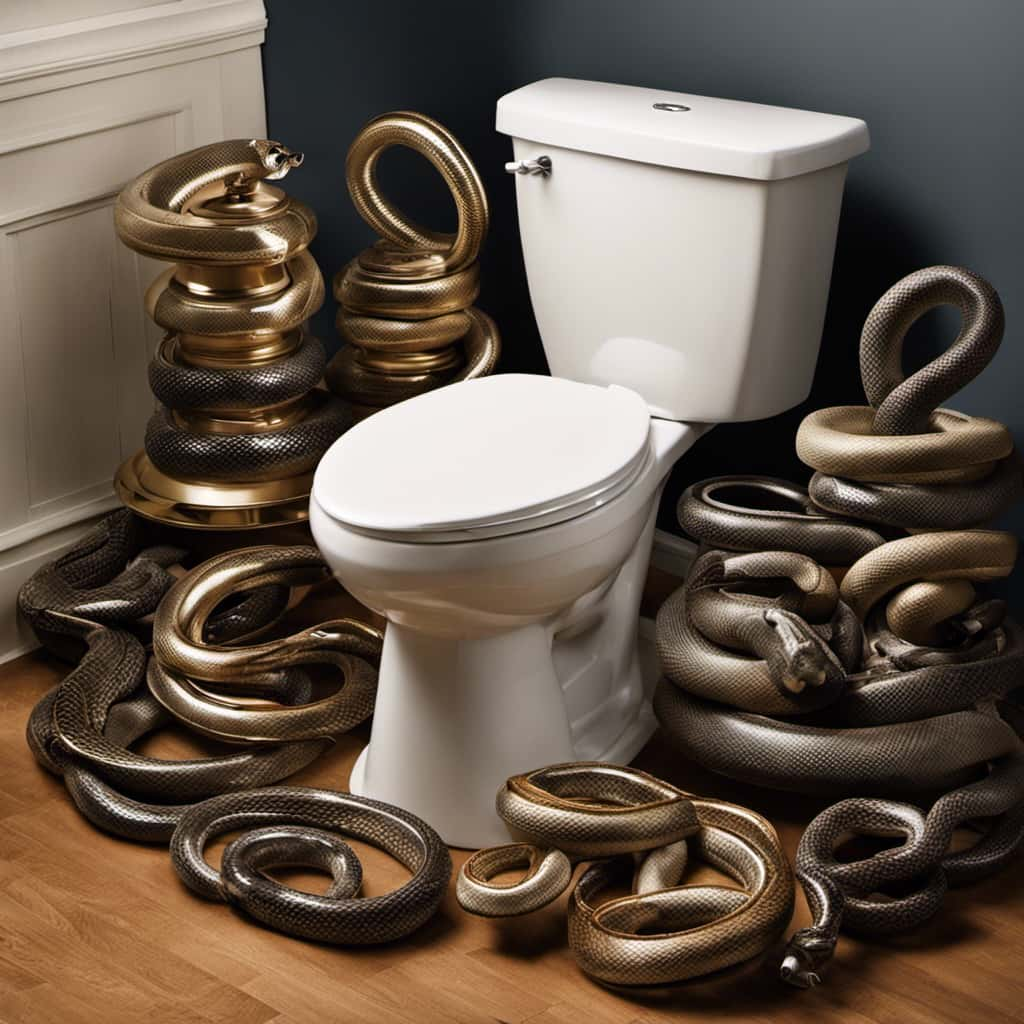
Can I Use a Plunger if the Toilet Is Completely Clogged?
To unclog a toilet, we should first determine if a plunger or a snake is needed. A plunger is effective for minor clogs, while a snake is better for stubborn ones. Avoid using chemical drain cleaners, as they may damage the plumbing.
How Can I Prevent Future Blockages in My Toilet?
To prevent future blockages and maintain a healthy toilet, we can take some simple steps. Regularly clean the toilet bowl, avoid flushing non-flushable items, and use a toilet auger if necessary.
Is It Necessary to Call a Professional Plumber if the Toilet Is Not Flushing Properly?
When the toilet isn’t flushing properly, it’s not always necessary to call a professional plumber. With some toilet troubleshooting and DIY toilet repairs, you can often fix the problem yourself.
Conclusion
In conclusion, troubleshooting a non-working toilet can be a simple process if you follow these step-by-step instructions.
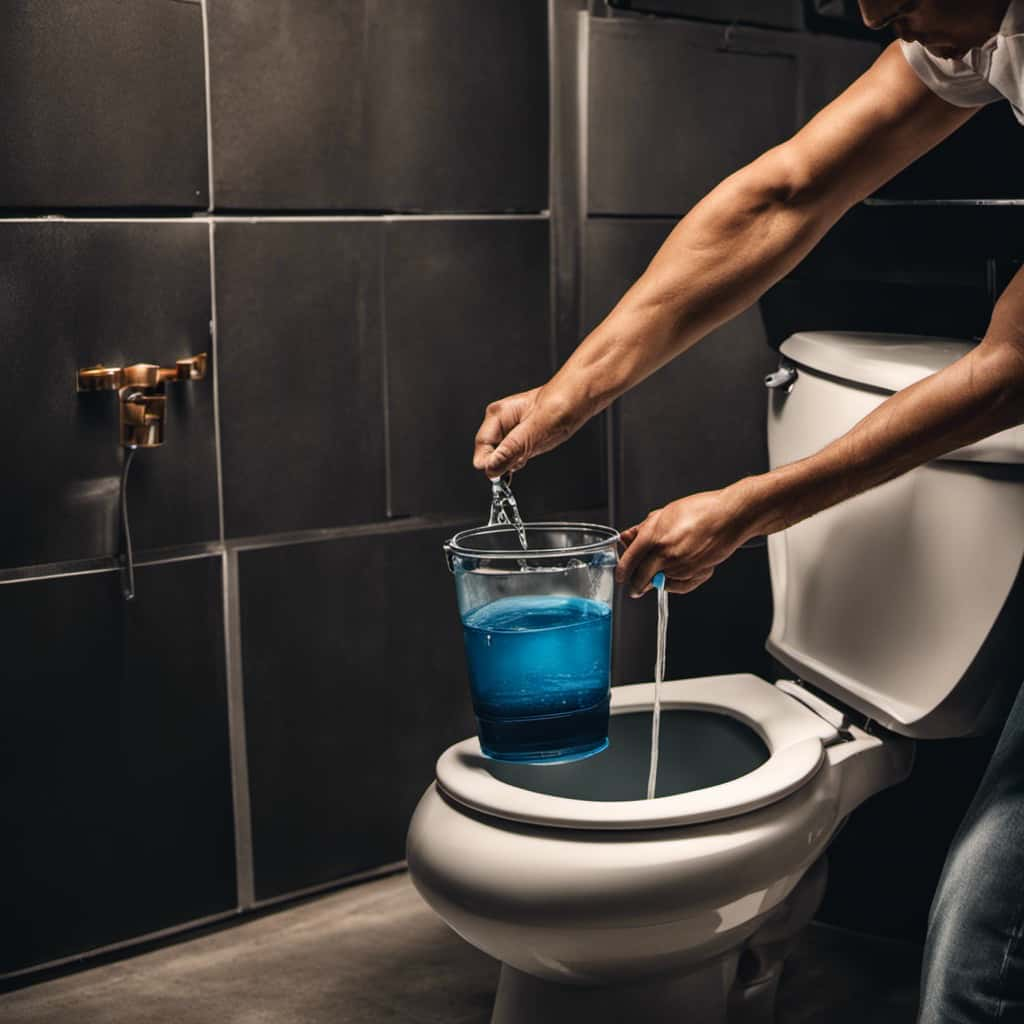
While some blockages can be easily resolved with a plunger, stubborn clogs may require the use of a toilet auger.
Additionally, checking the water level in the tank and adjusting or replacing the flush mechanism can help ensure proper flushing.
By following these steps, you can quickly resolve toilet issues and restore functionality.



